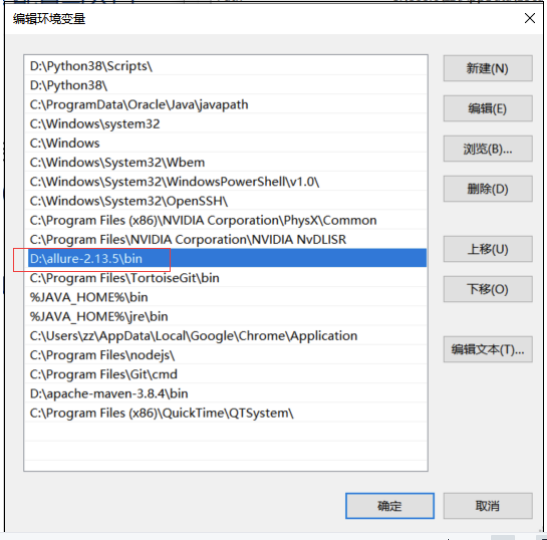WEB自动化-Allure报告-Allure安装和简单用法
WEB自动化测试可以借助Allure生成美观的测试报告。
1、安装工具及配置环境变量
1.安装JDK1.8 才可运行allure,直接百度,一大堆
2.下载Allure的安装包(版本号:2.13.5)
https://repo.maven.apache.org/maven2/io/qameta/allure/allure-commandline/
3.解压Allure压缩包
4.配置Allure到环境变量,到path里面,D:\allure-2.13.5\bin

打开cmd, 验证: allure --version
2、安装allure-pytest
allure测试报告是基于pytest运行的,运行之后生成一个json报告数据源,来实现结果
的展示,以一个工程的形态展示本次测试的所有测试结果
需要集成pytest实现allure的展示,需要安装:
pip install allure-pytest
验证:pip show allure-pytest
PS:allure报告生成之后,要发给别人,必须发送report的整个文件夹,并且要用pycharm
才能打开
验证:
创建测试用例文件,弄几个简单的例子
def test01(): print("1") class TestDemo: def test02(self): print("2") class TestDemo1: def test03(self): print("3") def test04(): print("4")
再创建main文件执行用例
import os # 导入操作系统包,接口和系统之间交换数据 import pytest def run(): # pytest.main(['-s']) pytest.main(['--alluredir', './result', '--clean-alluredir']) # --clean-alluredir是为了清除上次的记录,以免显示报告是上次的 os.system('allure generate ./result/ -o ./report/ --clean') # 这里的clean也是为了清除上次的报告 if __name__ == '__main__': run()
在生成的report目录下找到index.html文件,打开可显示报告





 浙公网安备 33010602011771号
浙公网安备 33010602011771号